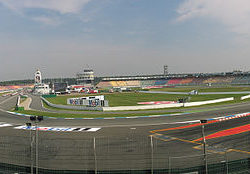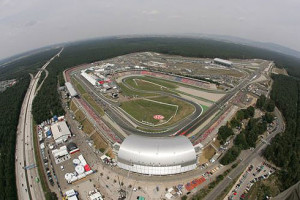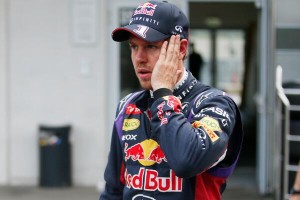
The battle for supremacy between Lewis Hamilton and Nico Rosberg has been so enthralling that somehow the Formula 1 season is already on the cusp of its tenth round.
Hockenheim returns for the first time since 2012 to not only the new hybrid Formula but also to a new pecking order. In 2012, the Hockenheimring had its first introduction to both DRS and Pirelli tyres. Red Bull Racing and Lotus arrived at that grand prix as the likely podium contenders. Ferrari’s Fernando Alonso won the race from Jenson Button and Kimi Raikkonen.
The circuit’s 4.574 km layout is a blend of long straights and final sector medium-speed corners. The hairpin in the first sector of the lap is a key area for overtaking which places commands good braking performance. Despite a relatively short lap driver and engineers need to strike a balance between top-speed and downforce. “You’d like to have the downforce for the stadium and to keep it steady on the brakes but equally you don’t want too much drag on the straights,” says Red Bull driver Daniel Ricciardo.
 The final sector is not favourable for overtaking but the stadium section is a vital element to what makes the German GP unique. The decidedly muted sound of Formula 1 cars should make it possible to hear the cheering of the crowds, should a German driver be leading the race.
The final sector is not favourable for overtaking but the stadium section is a vital element to what makes the German GP unique. The decidedly muted sound of Formula 1 cars should make it possible to hear the cheering of the crowds, should a German driver be leading the race.
The driver’s will need to vigilant at the start of the race as the first corner tightens dramatically before opening up onto the straight. Although there is an expanse of run-off area a touching of wheels or front-wing is a high probability. Teams such as Ferrari will need to devote more time towards their qualifying pace in order to avoid starting mid-grid and the possibility of a first-lap incident.
Before then, the first one and a half hours of free practice will be the centre of attention as Williams’ development driver Susie Wolff gets another opportunity to participate in an official session. However, don’t expect any flashy laptimes from the Scot. The main aim is to run through Williams’ program which is geared towards set-up of the car rather than outright pace.
Sebastian Vettel’s Red Bull didn’t have the pace to challenge for victory around the Hockenheimring two years ago and it’s not much is different in 2014. The reigning champion is unlikely to match the Mercedes but the Red Bull may have a better outing this weekend thanks to the aerodynamic demands of the final sector.
different in 2014. The reigning champion is unlikely to match the Mercedes but the Red Bull may have a better outing this weekend thanks to the aerodynamic demands of the final sector.
Out of the car the verbal digs continue between the two Mercedes drivers. Ahead of the German GP Lewis Hamilton noted that seeing as Nico Rosberg was raised in Monaco he could not consider himself German. Rosberg responded to his teammate by describing himself as “100% German.” It is clear that Hamilton is continuing his methodical psychological battle against Nico Rosberg as much out of the car as on the track. Some may think it’s nonsense and that the Brit should get on with driving. However, the make-up of Lewis Hamilton the racing driver dictates he exploits every possible advantage, in whichever form it is presented.
It was crucial for Hamilton to strike back at Silverstone and it will be an important long-term victory if he does the same this weekend. The biggest incentive for Lewis Hamilton to bring that same intensity to the track is the chance to take over the lead of the driver’s championship.


